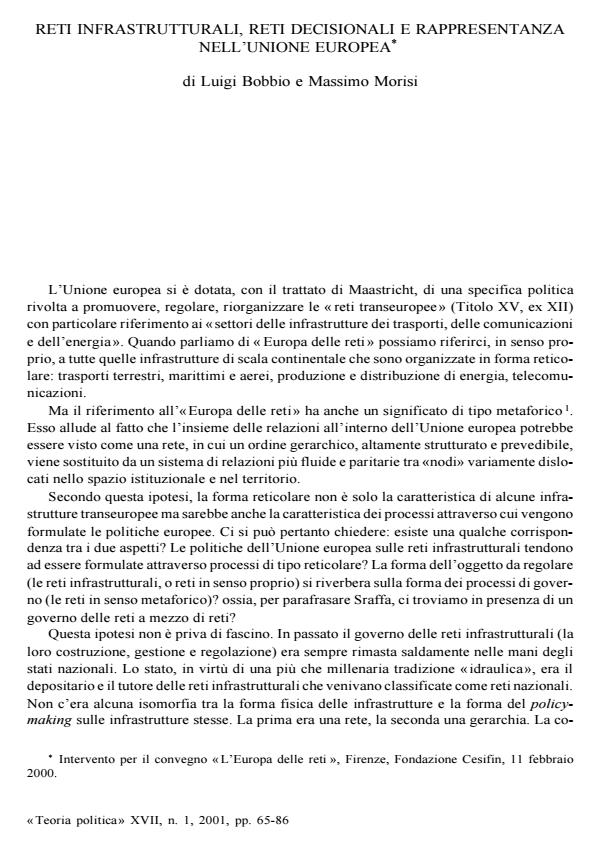Reti infrastrutturali, reti decisionali e rappresentanza nell'Unione Europea
Journal title TEORIA POLITICA
Author/s Luigi Bobbio, Massimo Morisi
Publishing Year 1 Issue 2001/1
Language Italian Pages 22 P. File size 69 KB
DOI
DOI is like a bar code for intellectual property: to have more infomation
click here
Below, you can see the article first page
If you want to buy this article in PDF format, you can do it, following the instructions to buy download credits

FrancoAngeli is member of Publishers International Linking Association, Inc (PILA), a not-for-profit association which run the CrossRef service enabling links to and from online scholarly content.
The Maastricht treaty gave the European Union the power to deal with trans-european infrastructural networks in the fields of transportation, communication and energy. This is a major change since the control over such networks was in the past tightly hold by national states. The paper explores the consequences of this change upon the processes of policy-making within the Union and discusses whether the decisions concerning the infrastructural networks are made through policy-making networks. Three policy-making models are taken into account: the functional model, the intergovernmental relations model, and the multilevel governance model. Each of them can explain some of the decision concerning different features of trans-european infrastructures, i.e. their fluency vs. their territorial shape. The analysis shows the growing importance of the «legitimization through output» within European Union and the growing role of territorial representation.
Luigi Bobbio, Massimo Morisi, Reti infrastrutturali, reti decisionali e rappresentanza nell'Unione Europea in "TEORIA POLITICA" 1/2001, pp , DOI: